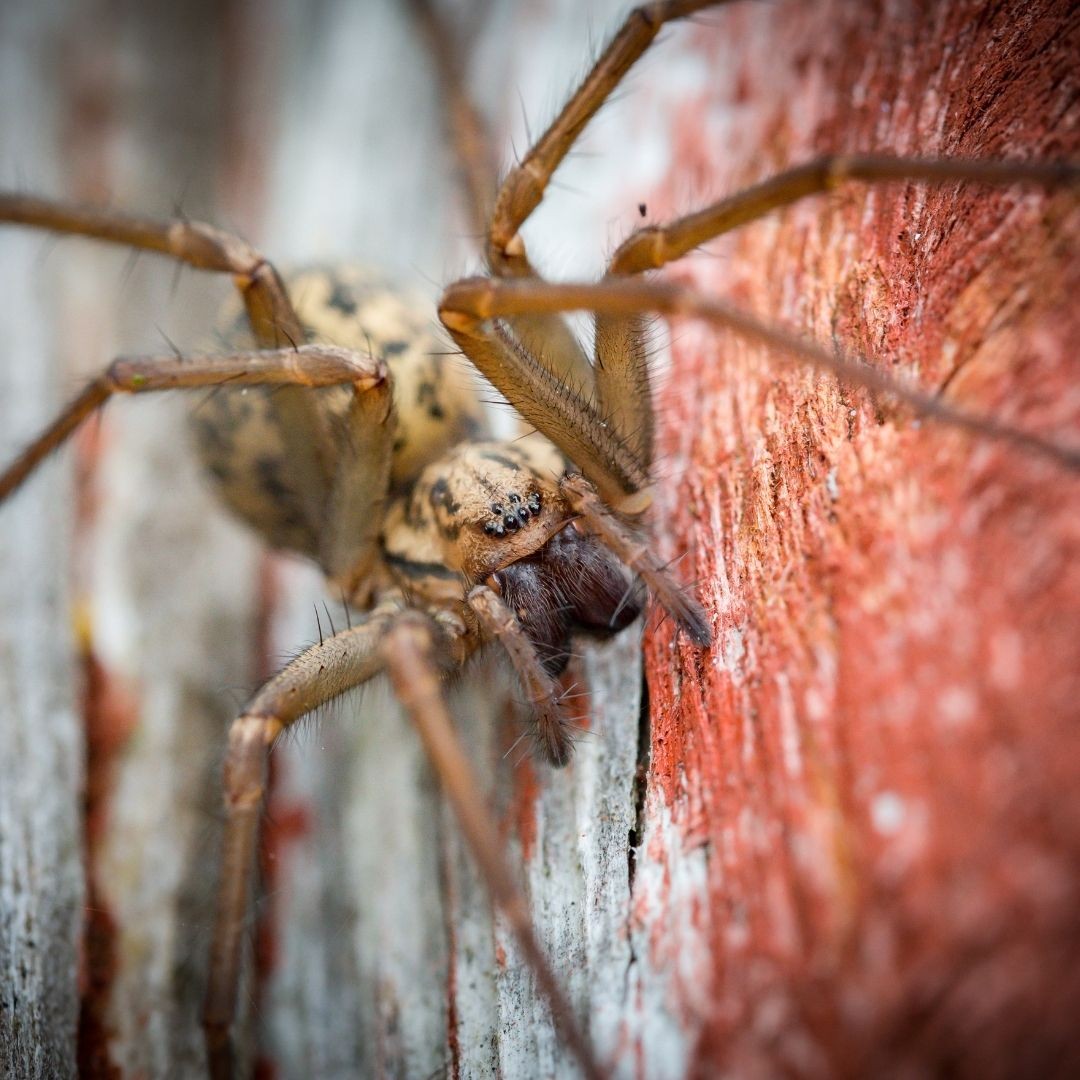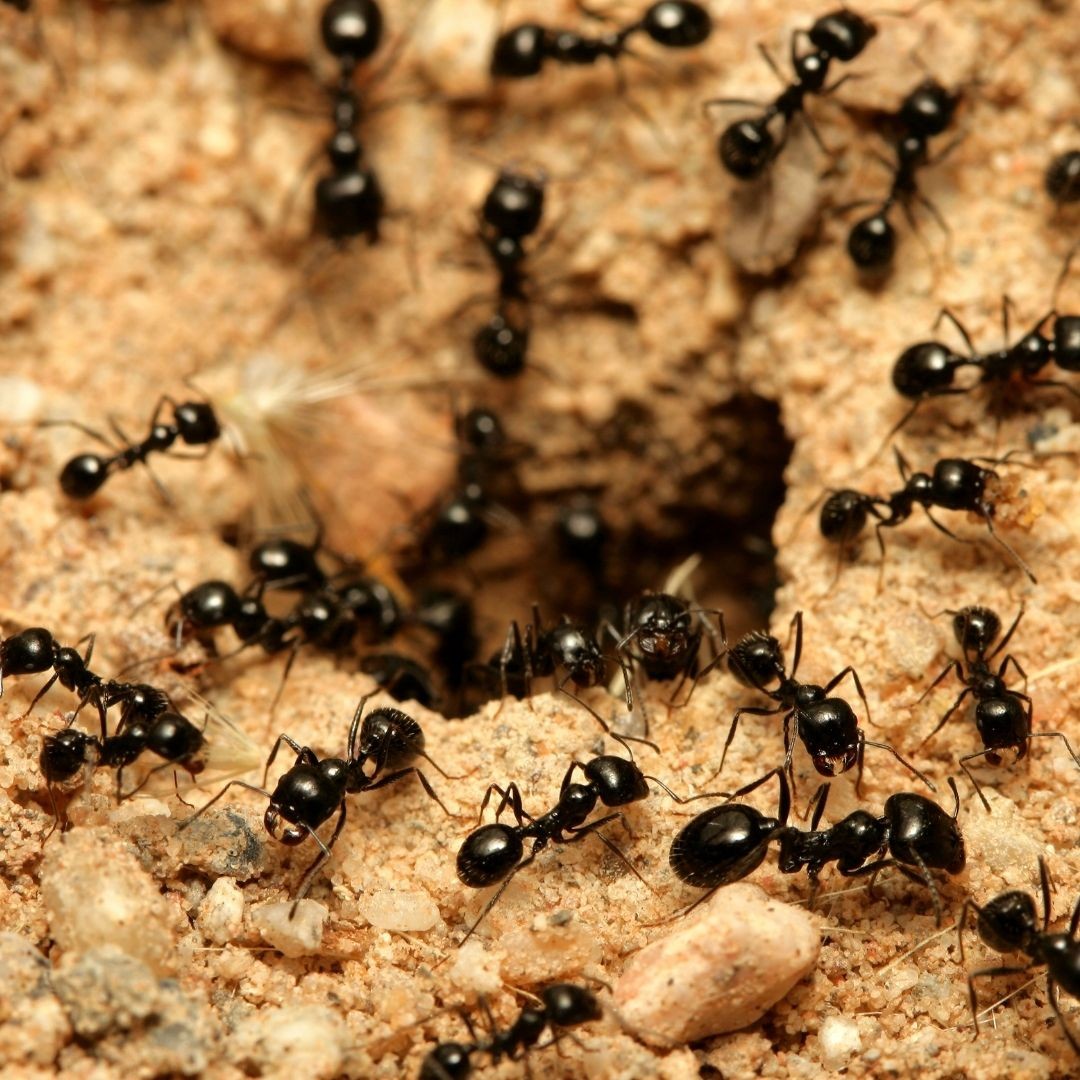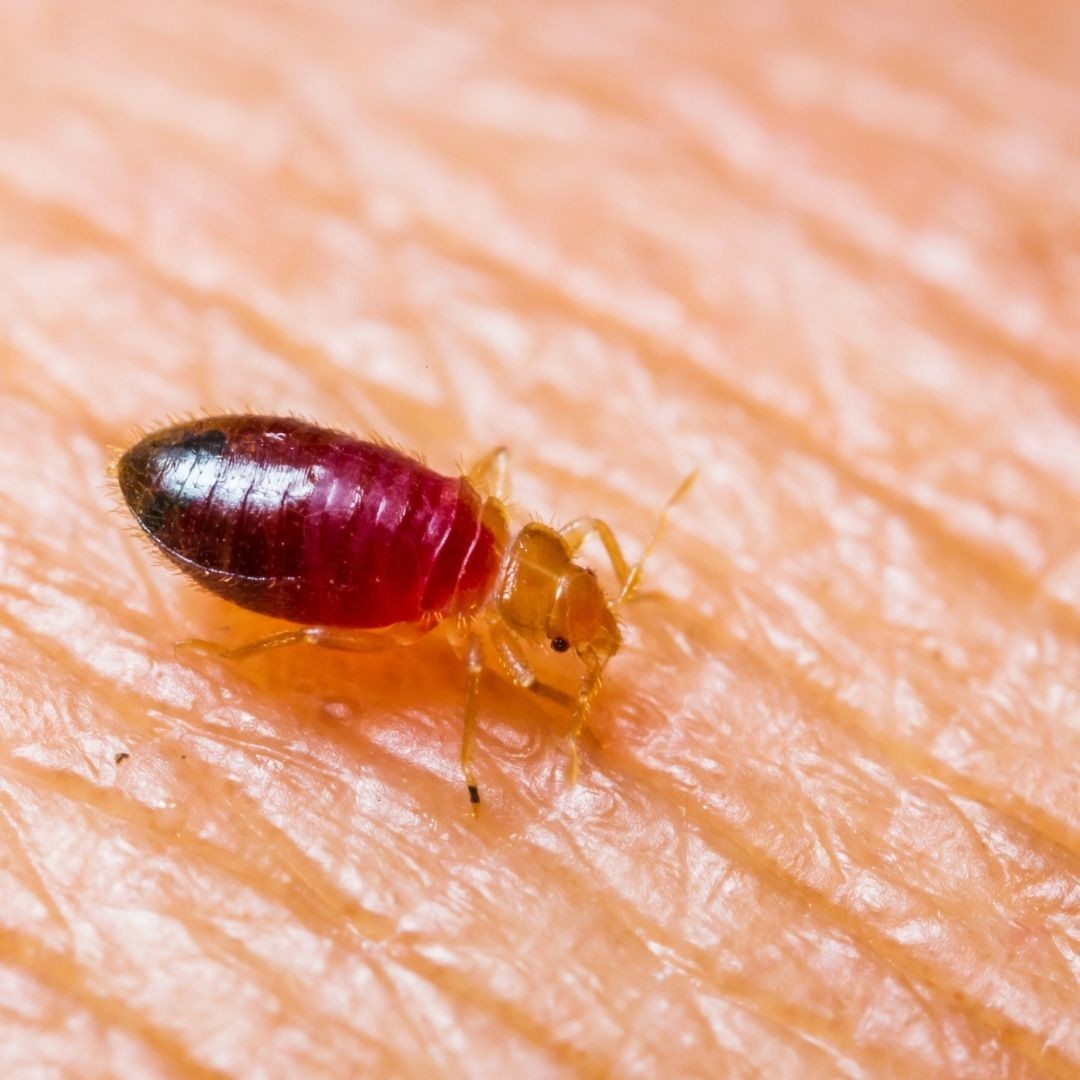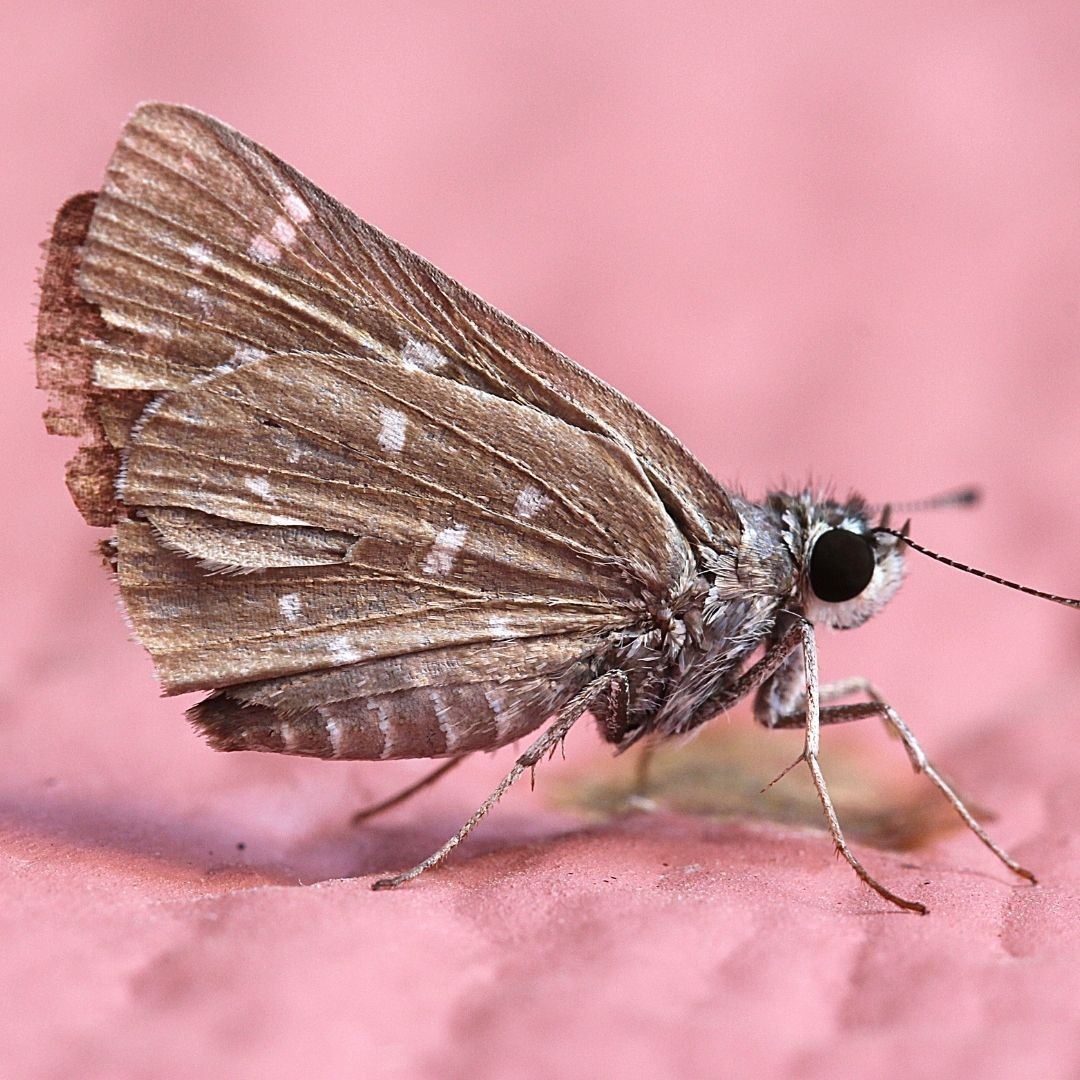-blog-header-(1)(1).png)
Pests. They really do live up to their name.
They come in all shapes and sizes, and can often bring along disease and damage.
But what are the biggest pests in the UK and how do you deal with them?
10th - Spiders
Our eight-legged friends may be the biggest phobia of almost 1 in 5 people in the UK, leaving behind annoying webs and lurking in curtain folds but in reality they are pretty useful pests.
Even in Australia, home to the world's most dangerous spiders, there hasn't been a fatality since 1979 due to a spider bite. In fact, scientists in the UK have been working out how to add antibiotics to silk bandages.
Not only that but spiders actually help to get rid of other pests by feeding on flies and mosquitoes that can carry viruses like malaria, as well as other insects that bother humans and crops such as beetles and caterpillars.
So, why are they on this list? Spiders can bite as part of a last-stand defence mechanism and some bites can be painful and even dangerous.
However, the main reason for their inclusion on this list is the fear factor. Arachnophobia is one of the most prevalent fears in the UK and spider webs are often equated with abandoned or dirty places.

How can I get rid of spiders?
Since spiders are a useful creature, repellents are recommended (or the old tactic of a glass and a piece of paper!).
A mixture of white vinegar and water in a spray bottle applied to crevices around your house can help deter spiders from setting up camp.
For more serious cases, professionals can use Phobi F+F One Shot: a great automatic release aerosol with a large application area of 375 cubic metres. It is an essential addition to a pest controller's arsenal for dealing with flying and crawling insects.
9th - Ants
In countries with warm climates or environments with enticing food sources, ants can be a real pest.
The UK, however, is home to around 30 species of green and black ants that generally aren't thought to carry disease unlike flies. There are 2 main species of ant in the UK which are considered ‘pests’ - Garden Ants and Pharaoh's Ants.
They can become a problem in homes and restaurants as ants use scent trails to search for food.
Ants can also disrupt plant roots and soil while gathering material for their nests, but they are mostly a nuisance when they make their way into homes. They can also aid the environment by spreading seeds and predating some mites and larvae.

How can I get rid of ants?
General cleanliness to remove food residue and blocking up cracks and holes in walls will help to get rid of ants.
However, if you have a nest or infestation in your home or restaurant, you need to take specific actions that directly target the nest.
First of all, you need to establish what ant species you are dealing with before using any type of treatment.
For example, using dusting or spray treatments on Pharaoh’s Ants could actually make the situation worse! Pharaoh’s Ants have multiple queens in a single nest and must be treated with a gel bait so the nest can be attacked from the inside. If you don’t, you risk triggering the ‘budding effect’; ants feel under attack and relocate the queen causing the colony to ‘bud’ and create separate colonies. Over time, this can create an almost unmanageable situation.
An effective gel bait for ants is Imidiasect Ant Gel, which works on Pharaoh, Argentine and Black Ants. When foraging ants eat the bait, they return to the nest and transmit the bait to the queen and the entire colony. You should see visible signs of success within a few days.
Insecto Pro Formula Powder Ant & Nest Killer is an easy to use insecticide. It kills on contact, so take the bottle and apply the dust directly to cracks or holes that you believe harbour ants or other crawling insects.
8th - Foxes
A 2018 survey by the Game Wildlife Conservation Trust estimated the UK’s fox population at 357,000. The Red Fox is native to Britain and has adapted well to urban areas.
Foxes are problematic because they are effective hunters. They can climb over, bite through, dig under or squeeze through fencing, putting chickens and rabbits at risk. Discover Wildlife estimates that foxes cause between £10-12 million in damage to poultry and livestock, including lambs and piglets.
They can also dig up plants and get into bins and waste.

How do I get rid of foxes?
People who tell you to fox-proof your hen house have clearly never tried to control poultry! Using welded mesh rather than chicken wire to strengthen it can be helpful, as well as covering up rabbit hutches and removing sources of food.
However, you can repel foxes from entering your garden or property. Organ-X Cat & Animals Deterrent Spray is a ready to use spray preventing foxes, dogs and cats from entering your garden. For the best protection, use this product as soon as you notice animals roaming in your garden.
7th - Bedbugs
Bedbugs aren’t just from tales in the past. They are a very real problem for people in the UK.
Since May 2019, there has been an almost 30% rise in bedbug cases in bed frames, dirty wallpaper and mattresses.
While bedbugs cannot fly, they move quickly and female bedbugs can lay hundreds of eggs in their 4-6 month lifespan. Throughout 2020, people reported that most spreading of the bedbug population spread via public transport but they can also spread through luggage, second hand furniture, clothing or mattresses.
Perhaps the most obvious clue that you have bedbugs is bite marks. Bedbugs are very sensitive to heat, like that given off by our bodies when we are in bed. This is how they find their food sources. They are also attracted to the CO2 that we expel when breathing, leading to bites occurring mainly around the warmest parts of our body like our back, abdomen, groin, arms and face.
Bite marks appear as small red circles and can become itchy over time, not unlike mosquito bites and usually appear in a line formation, where they have had their breakfast, lunch and dinner!
To distinguish between the two, look out for small blood patches on your bed sheets and for brown spots from bedbug excretion. In extreme cases, people have described an almond-like smell surrounding infested areas.
While bedbugs don't necessarily spread disease, bites can get infected, some may be allergic to bites and bites in general are itchy and cause a loss of sleep.

How do I get rid of bedbugs?
Hoovering around cracks, crevices and the seams of mattresses can help keep infestations down, however you must remember to empty the contents directly into an external bin as moving items from an infested room to another part of the house could potentially cause the spread of an infestation.
Aside from this, you will need to use an insecticide in order to control the spread and reduce the infestation down. We recommend Insecto Pro Formula Insect Fogger+. This is a one shot aerosol with an automatic release that will clear a room of crawling and flying insects, including bedbugs and fleas.
Handsprays can also be useful, such as the Insectaclear Strong+ which can be sprayed onto mattresses, carpets and bedding.
6th - Moths
Case Baring or Carpet Moths just missed out on the number 5 spot. They can cause irreversible damage to carpets and clothing as their larvae chew on natural fibres throughout the year.
Moths are generally introduced into properties through contaminated items such as second hand or antique furniture, but they can also be introduced as a secondary pest species. For example, Birds Nest and Wasps Nests can be the route cause of an infestation.

How can I get rid of moths?
Moths tend to be found in the dark, low traffic areas of your home. Large furniture items such as units, sofas, beds and rugs will provide a safe haven for any invading moths. In these areas, you may find signs of damage to your rugs or carpets.
Another way to identify if you have an infestation of Textile Moth is to look for small casings in which the larvae develop into the adult moth. These will look like grains of rice. Also, webbing under heavy furniture can be found which is known as “Frass”, as larvae can transform into an adult moth in such places.
Organ-X Clothes Moth Traps are brilliant non-toxic traps for indoors. They can be used to lure and catch male moths into the trap with sex pheromones. Simply put the traps in places that are susceptible to moths (such as your wardrobe or drawers), check the trap every week and replace it every two months.
In heavy infestations it is advisable to carry out a treatment in affected areas with an insecticide in order to bring the problem down to a lower level, products such as Desi Dust will provide adequate treatment around homes if you require a more non toxic approach.
Come back soon for the top five pests in the UK!





